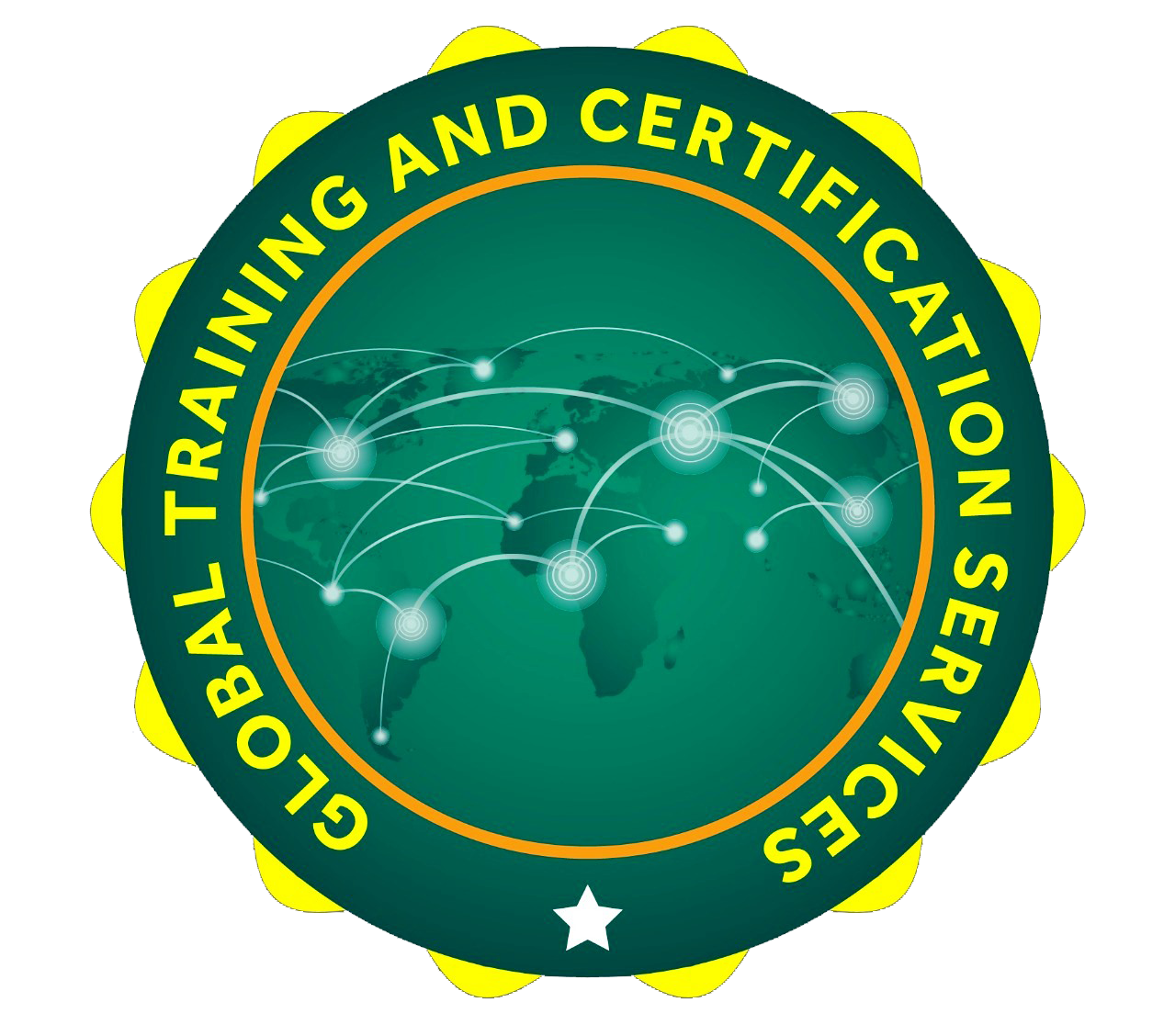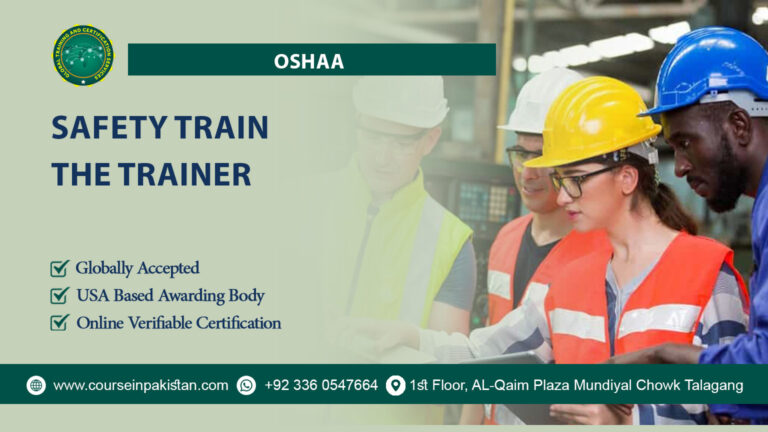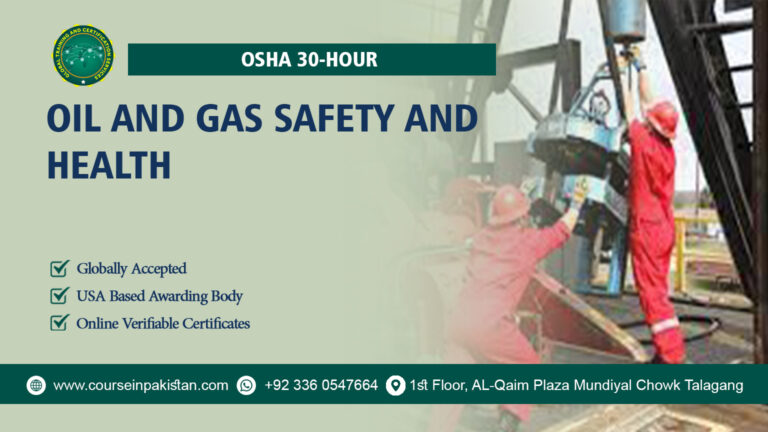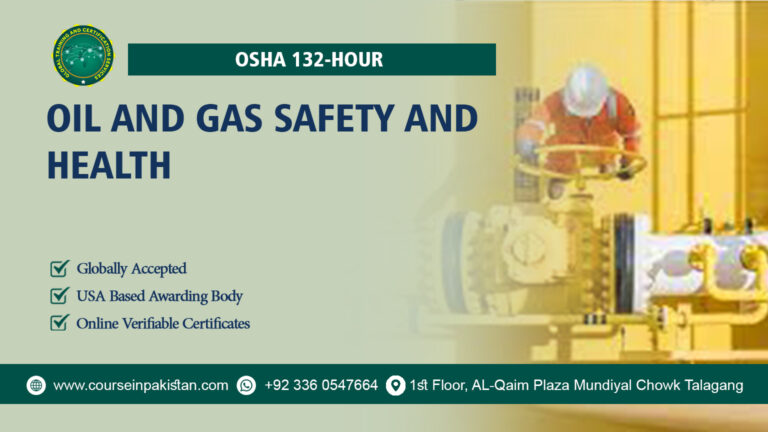
OSHA 132-Hour Oil and Gas Safety and Health
In the dynamic and often hazardous world of oil and gas extraction, ensuring safety and health on the job is paramount. One of the most robust training programs designed to address these critical needs is the OSHA 132-Hour Oil and Gas Safety and Health course. This blog post aims to provide a detailed overview of this course, including its introduction, benefits, study units, learning outcomes, target audience, and future progression opportunities.
The OSHA 132-Hour Oil and Gas Safety and Health course is a comprehensive training program designed to address the specific safety and health risks associated with the oil and gas industry. This course, developed by the Occupational Safety and Health Administration (OSHA), aims to provide industry professionals with an in-depth understanding of safety regulations, risk management, and health protocols pertinent to oil and gas operations. With a focus on practical, hands-on training, the course equips participants with the knowledge and skills necessary to create a safer working environment in one of the most challenging sectors
The course spans 132 hours, providing a thorough exploration of various safety and health topics relevant to the oil and gas industry. The curriculum covers a range of subjects, from basic safety principles to advanced risk management techniques, ensuring that participants gain a well-rounded perspective on maintaining safety standards. The course is designed for a blend of classroom instruction and practical exercises, allowing for both theoretical understanding and real-world application.
Course Benefits
Participants of the OSHA 132-Hour Oil and Gas Safety and Health course can expect several key benefits:
- Enhanced Knowledge: Gain a comprehensive understanding of OSHA regulations, industry best practices, and safety protocols specific to oil and gas operations.
- Improved Safety Practices: Learn how to identify and mitigate hazards, implement safety measures, and respond effectively to emergencies.
- Regulatory Compliance: Ensure that your operations meet OSHA standards, reducing the risk of fines and penalties due to non-compliance.
- Career Advancement: Enhance your professional credentials and increase your employability by demonstrating a commitment to safety and health in the oil and gas industry.
- Practical Skills: Develop hands-on skills through simulations and exercises that mirror real-world scenarios, enhancing your ability to apply safety protocols effectively.
Course Study Units
The OSHA 132-Hour Oil and Gas Safety and Health course is divided into several study units, each focusing on different aspects of safety and health in the industry:
- Understand Advanced OSHA Regulations and Standards
- Advanced Hazard Identification and Risk Assessment
- Process Safety Management (PSM)
- Emergency Preparedness and Response Planning
- Health and Environmental Hazards
- Leadership and Safety Culture
- Advanced Personal Protective Equipment (PPE)
- Safety Training and Education
- Contractor and Vendor Safety Management
- Regulatory Compliance and Auditing
Learning Outcomes
Upon completion of the OSHA 132-Hour Oil and Gas Safety and Health course, participants will be able to:
- 1. Understand Advanced OSHA Regulations and Standards
- Outcome: Participants will be able to interpret and apply advanced OSHA regulations and standards relevant to the oil and gas industry, ensuring full compliance with federal safety requirements. They will also be equipped to stay current with updates and changes in regulatory frameworks.
2. Advanced Hazard Identification and Risk Assessment
- Outcome: Participants will gain the skills to conduct comprehensive hazard identification and risk assessments, using advanced techniques and tools to identify potential hazards in complex operational environments and implement effective risk control measures.
3. Process Safety Management (PSM)
- Outcome: Participants will be proficient in the principles of Process Safety Management (PSM), including the development, implementation, and management of safety programs designed to prevent and mitigate catastrophic events related to chemical processes.
4. Emergency Preparedness and Response Planning
- Outcome: Participants will be able to design and implement robust emergency preparedness and response plans, ensuring readiness for various scenarios such as fires, explosions, and environmental emergencies, and effectively manage real-time response efforts.
5. Health and Environmental Hazards
- Outcome: Participants will understand the health and environmental hazards associated with oil and gas operations, including exposure to hazardous substances and impacts on local ecosystems, and will be able to develop strategies to mitigate these risks.
6. Leadership and Safety Culture
- Outcome: Participants will learn to foster a positive safety culture within their organizations, demonstrating leadership skills that promote safety awareness, accountability, and continuous improvement in safety practices among team members.
7. Advanced Personal Protective Equipment (PPE)
- Outcome: Participants will be skilled in selecting, using, and maintaining advanced personal protective equipment (PPE) tailored to specific hazards in the oil and gas industry, ensuring the highest level of protection for workers.
8. Safety Training and Education
- Outcome: Participants will be capable of developing and delivering effective safety training and educational programs, tailored to the needs of different roles and operational contexts, enhancing overall safety knowledge and competence.
9. Contractor and Vendor Safety Management
- Outcome: Participants will be able to establish and manage safety programs for contractors and vendors, ensuring that external parties comply with organizational safety standards and OSHA regulations while working on-site.
10. Regulatory Compliance and Auditing
- Outcome: Participants will acquire the expertise to conduct thorough regulatory compliance audits, identifying areas of non-compliance, implementing corrective actions, and ensuring ongoing adherence to OSHA standards and other regulatory requirements.
These learning outcomes ensure that participants of the OSHA 132-Hour Oil and Gas Safety and Health course are well-equipped to manage and enhance safety and health practices within the oil and gas industry, contributing to a safer work environment and improved regulatory compliance.
Who Is This Course For?
The OSHA 132-Hour Oil and Gas Safety and Health course is designed for a wide range of individuals working within the oil and gas sector, including:
- Safety Professionals: Those responsible for implementing and overseeing safety programs and policies.
- Field Workers: Employees involved in hands-on operations who need to understand and apply safety protocols.
- Supervisors and Managers: Individuals in leadership roles who need to ensure that their teams are trained in safety and health practices.
- Contractors: External parties working on oil and gas sites who must adhere to OSHA standards.
Future Progression
Completing the OSHA 132-Hour Oil and Gas Safety and Health course opens up various future progression opportunities for participants:
- Advanced Certifications: Pursue additional OSHA certifications or industry-specific safety credentials to further enhance your expertise.
- Specialized Training: Engage in specialized training programs related to specific aspects of oil and gas safety, such as confined space entry or advanced hazard management.
- Career Advancement: Take on more advanced roles within safety management, compliance, or risk assessment in the oil and gas industry.
- Industry Networking: Connect with professionals and organizations in the industry to explore new career opportunities and stay updated on best practices.
the OSHA 132-Hour Oil and Gas Safety and Health course is a vital training program for anyone involved in the oil and gas industry. By providing in-depth knowledge and practical skills, this course ensures that professionals are well-equipped to maintain safety and health standards, ultimately contributing to a safer and more compliant workplace. Whether you’re looking to enhance your career or improve safety practices at your organization, this course offers a comprehensive pathway to achieving your goals.




